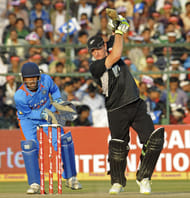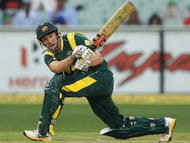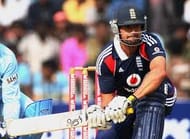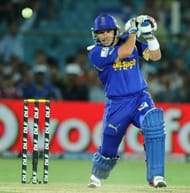It is always interesting to hear Mike Brearley deliver his views on the game of cricket given his propensity to be astutely psychoanalytic by nature. However, at the recent Bradman Oration, someone else managed to steal the limelight from under his nose.
This someone happens to be none other than Rod “Iron Gloves” Marsh – like all true blue Aussies, a man known more for his actions on the field than his words. On this night, though, Marsh came up with a concept which, if implemented, could have long lasting implications of the game – most of them for the good of it.
Marsh’s concept is simple – limit T20 to an age group of 30 plus. This serves at least two purposes – youngsters preserve their technique and raw talent to play the longer formats of the games while veterans and not so talented journeymen make their mark in the shortest format.
Given the amount of money that rides of T20 these days, not many (especially those under 30) might be open to this idea. Then again this idea definitely has merit – some of the most prolific T20 cricketers around the world are those who are past their sell-by date in other formats . We take a look at five such batsmen who can still call the shots with their range of shots in the domestic T20 leagues around the world.
Herschelle Gibbs (90 Tests, Batting Avg. – 41.95; 171 T20s, Strike Rate – 123.14) – Gibbs might have been counted amongst the batting greats of his generation had he restricted his incendiary spirit only to his batting. A batting average in the lows 40s may pigeon hole him as an ordinary player but the South Africans rightly believed in his extra-ordinary abilities to give him a chance to play 90 Tests.
And he paid his debts off quite often with some outrageous knocks that would stun the purists and enliven his admirers. The grandest of these was the indescribable 175 at the Wanderers which propelled South Africa to chase down 434 in THAT match.
But with his audacious talent came his audacity. From marijuana to drunk driving to match fixing, Gibbs has lived life in the fast lane and lived to tell a story. Most of these factors were responsible for his Test career getting cut short at 34 – an age where most batsmen of his calibre surge for the last time to produce something special. He bowed out of ODIs two years later in an exit that was as inglorious and obscure as it should not have been.
Where he has found a second wind is in the spawning T20 leagues around the world. Add his quicksilver fielding to his batting skills and you get someone who is cut out for the demands of the format. It also helps that he is a freelancer and is not bound down by trifling things such as the international calendar.
Scott Styris (29 Tests, Batting Avg. – 36.04; 174 T20s, Strike Rate – 134.76) – Scotty Styris fitted into the conventional and almost stereotypical mould of a 90s Kiwi all-rounder – a bits-and-pieces cricketer who carried a heavy bat and who could dibble-dobble the ball around in helpful conditions. He worked hard on his batting and, within three years of his international debut, received an elevation to Test match player.
Although, to be unfair to him, it was only a team like New Zealand who could afford to keep a player like Styris in the middle order given their perennial lack of superstars. To be fair to him, he did the best what his limited abilities allowed him to – a batting average in the mid-30s coupled with the occasional wicket.
Having wound up his Test match career at a premature age of 32 in a bid to preserve himself for limited overs cricket, he played the other two formats for New Zealand till the 2011 World Cup when he finally called it a day. Relieved of his international duties, Styris turned his attention full-time to T20 where his all-round skills have made him a much coveted option. So much so that he has actually started to work his way back upward – after representing the Sylhet Royals in the Bangladesh Premier League, he is now turning out for the domestic one day tournament in the country for the Gazi Tank Cricketers.
David Hussey (No Tests; 221 T20s, Strike Rate – 134.38) – Hussey junior was supposed to follow the same route which his illustrious elder brother had taken – score tons of runs in the first class leagues of Australia and England before making it to the Test match squad.
The Test match call-up never came; for five years Hussey was bandied around the limited overs squads as an experienced old hand in a side undergoing a major transition. To be fair to him, he tried his best but clearly Cricket Australia didn’t see him as a long-term option. Even as he topped the run charts with almost 1000 runs in 2009-10 on his way to leading Victoria to the trophy, the Australian selectors were looking for younger soldiers.
Despite his desperation not to be typecast as a T20 player, it is this format that his crash-and-bang style suits the most. Hussey isn’t as much of a mercenary as he is made out to be – India is the only country where he has played in only one format (the IPL).
That hasn’t stopped him from being prolific in the shortest format – he averages over 30 with a strike rate in the 130s. Add to that his loopy offbreaks and superlative commitment to fielding and you get a T20 legend of sorts.
Owais Shah (6 Tests; Batting Average – 26.90, 192 192 T20s, Strike Rate – 126.80) – If he wanted to, Shah could have had a fulfilling Test match career for two countries thanks to his immense potential, birthright to Pakistan and England’s tendency to ignore the Tibbit Test. Instead he chose the path oft taken as he completed a total of 6 Tests at a batting average in the 20s and no centuries.
When Wisden praises your “abundant promise”, it becomes a heavy burden to carry and lesser mortals than Shah drop it. Glimpses of that “abundant promise” though flashed through from time to time right from his international debut in 2001 to his Test debut against India in Mumbai where he scored a sterling 88 in a historic series-squaring victory for England.
He continued to remain ho-hum over the next three years till it appeared that he had apparently rediscovered his mojo with a picture-perfect knock of 98 off 89 in the 2009 Champions Trophy. That series turned out to be his last as England, under a new regime, went for a complete overhaul which brought them success in the limited overs formats where they had always been traditional laggards.
Ironically enough, Shah came back into the news as a T20 specialist – he had changed four teams in the first five years of the IPL. He is a rare sight to watch when in full flow – a batsman capable enough to devastate with minimum effort and an array of eye-catching strokes. Only if it had come earlier in the day.
Brad Hodge (6 Tests, Batting Avg. – 55.88; 201 T20s; Strike Rate – 130.45) – Like they did with Michael Hussey, Australia waited till Brad Hodge was 30 before they decided to give him a chance to prove his mettle in the India series of 2004. He narrowly lost out to a debut tussle with Michael Clarke at Bangalore and the rest is history.
A year later, he got his Test cap on the back of a first Ashes loss in 16 years. He did little wrong scoring 60 on debut and then tonking a double century against South Africa in his third Test.
But 5 Tests and an average of 58.42 later, Australia’s interests in him had waned. He vowed to fight back and announced his return to the one day squad next summer with knocks of 99 not out and 97 not out against the Kiwis at home. That earned him a World Cup ticket but he would only get a chance to return to the Test match team a year later and that too as a fill-in. After which he was again dropped unceremoniously.
Disillusioned, Hodge drifted out of the first-class game by 2009-10. The same season he topped the averages in the FR Cup which is Australia’s domestic limited overs championship. Clearly onto something, Hodge channelled all his focus and potential into becoming a hired gun who is worth every cent paid for him.
Looking for fast live cricket scores? Download CricRocket and get fast score updates, top-notch commentary in-depth match stats & much more! 🚀☄️





